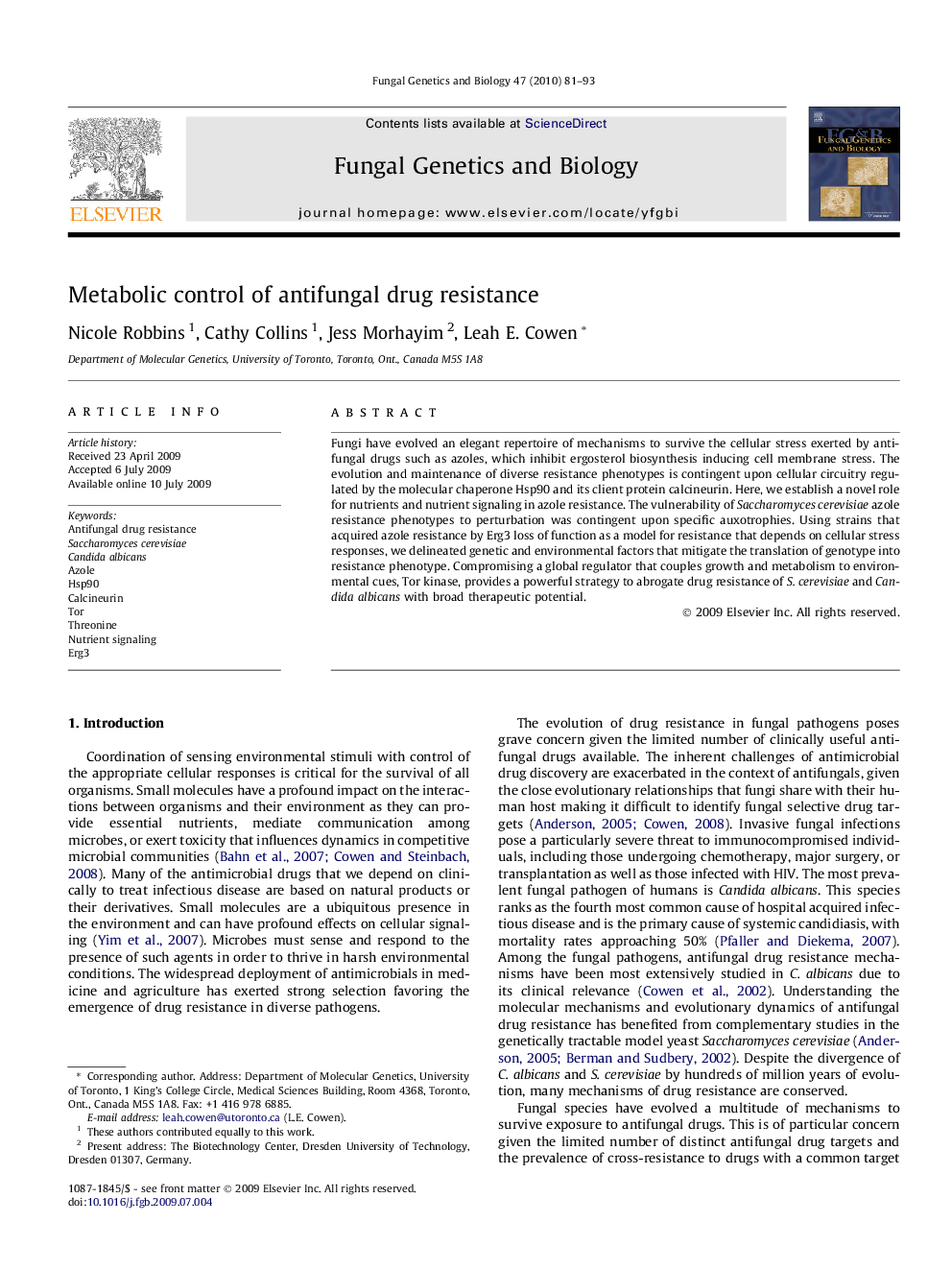| Article ID | Journal | Published Year | Pages | File Type |
|---|---|---|---|---|
| 10939599 | Fungal Genetics and Biology | 2010 | 13 Pages |
Abstract
Fungi have evolved an elegant repertoire of mechanisms to survive the cellular stress exerted by antifungal drugs such as azoles, which inhibit ergosterol biosynthesis inducing cell membrane stress. The evolution and maintenance of diverse resistance phenotypes is contingent upon cellular circuitry regulated by the molecular chaperone Hsp90 and its client protein calcineurin. Here, we establish a novel role for nutrients and nutrient signaling in azole resistance. The vulnerability of Saccharomyces cerevisiae azole resistance phenotypes to perturbation was contingent upon specific auxotrophies. Using strains that acquired azole resistance by Erg3 loss of function as a model for resistance that depends on cellular stress responses, we delineated genetic and environmental factors that mitigate the translation of genotype into resistance phenotype. Compromising a global regulator that couples growth and metabolism to environmental cues, Tor kinase, provides a powerful strategy to abrogate drug resistance of S. cerevisiae and Candida albicans with broad therapeutic potential.
Keywords
Related Topics
Life Sciences
Biochemistry, Genetics and Molecular Biology
Cell Biology
Authors
Nicole Robbins, Cathy Collins, Jess Morhayim, Leah E. Cowen,
